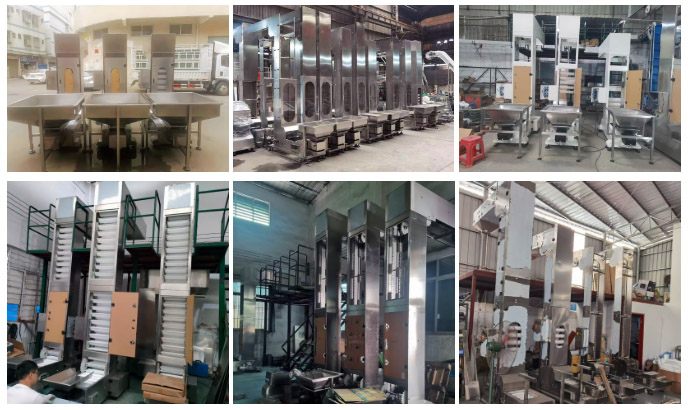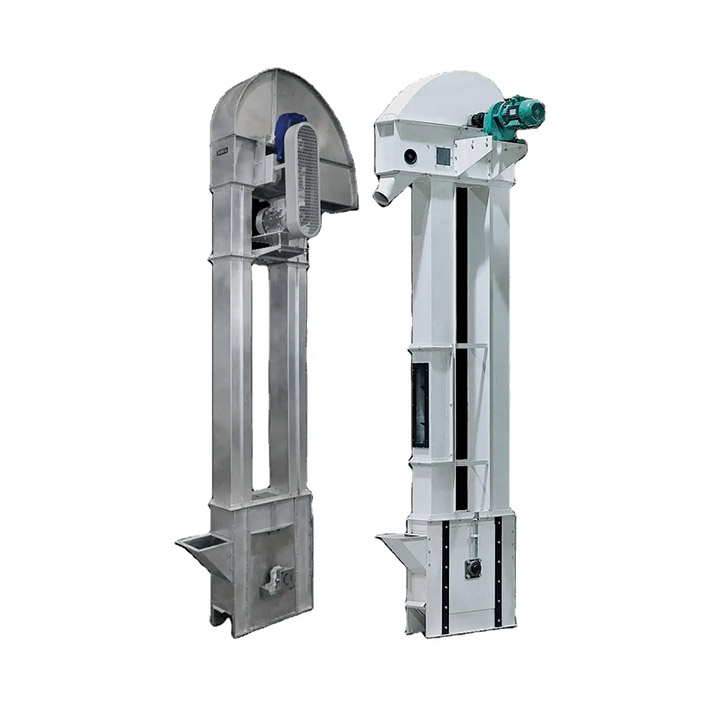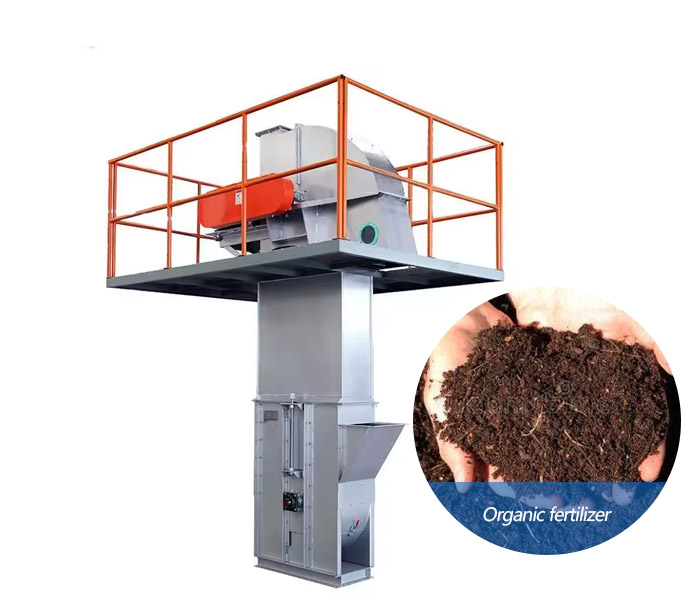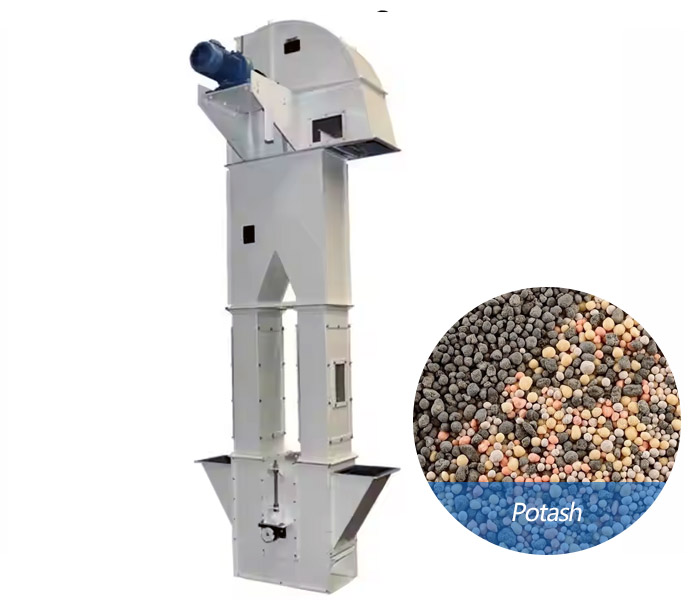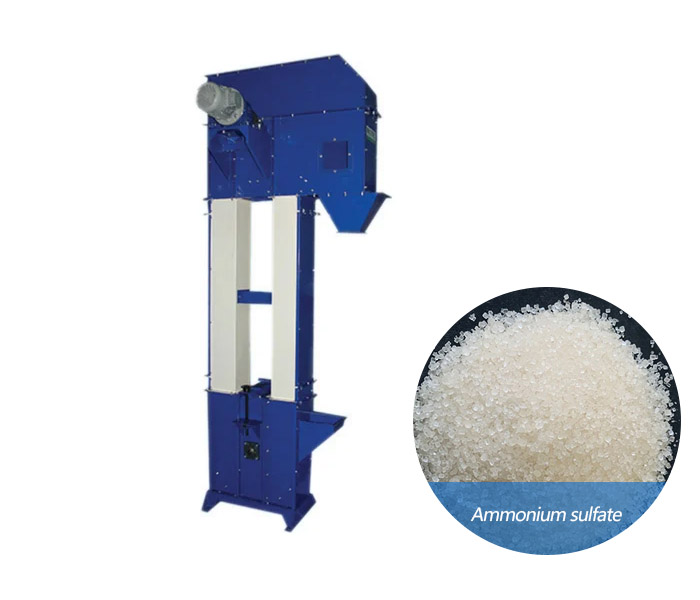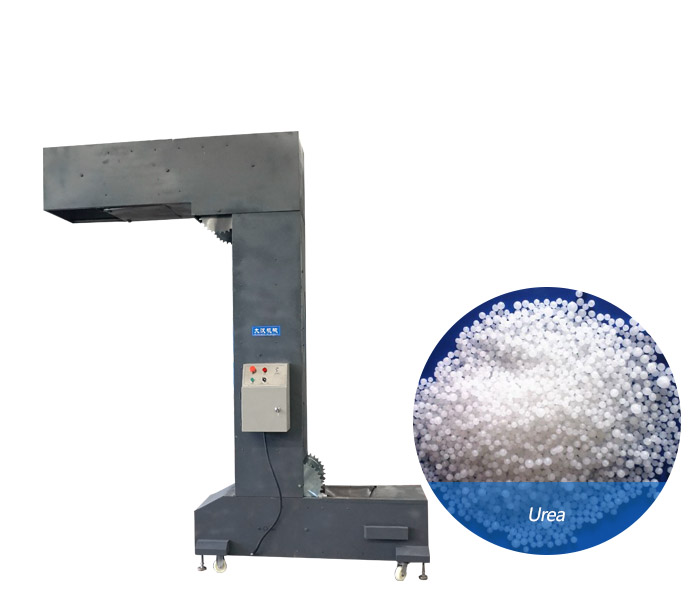
Urea conveying bucket elevator
Ideal equipment for vertical lifting of urea - chain/belt drive, precise control of filling and unloading to avoid particle damage
| Lifting height | 10-70 meters, customized according to specific needs. |
| Conveying capacity | 10–200 m³/h |
| Conveying material characteristics | Granular urea (usually 1-4 mm in diameter), bulk density of about 0.7-0.8 t/m³, temperature range: ≤80℃ (standard); high-temperature urea requires optional heat-resistant belts or chains (≤150℃) |
| Motor power | 3-30 kW |
| Traction components | Belts, chains |
| Operation speed | 0.8–2.5 m/s (centrifugal discharge) or 0.5–1.2 m/s (gravity discharge) |
What is Urea conveying bucket elevator?
Urea, as an important fertilizer and chemical raw material, is widely used in agricultural and industrial production. In the process of urea transportation, efficient and stable equipment is required to ensure its vertical or inclined transportation while avoiding material damage or contamination.
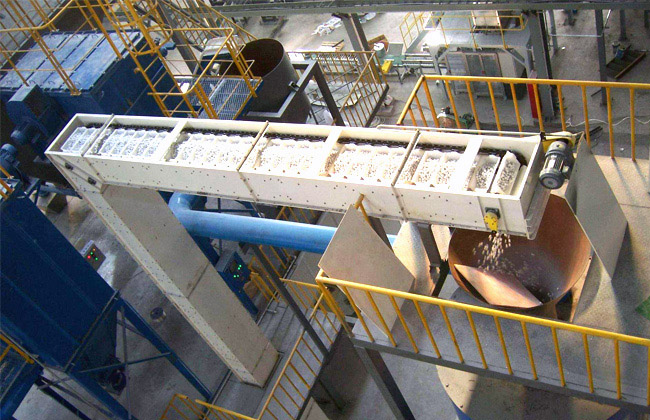
Urea conveying bucket elevator is a mechanical device that uses a bucket to continuously convey urea (a common fertilizer and chemical compound) in a vertical or inclined direction. It consists of a series of buckets connected to a belt or chain, which move within a housing or shell. The buckets scoop up urea from the bottom and then lift it to the top for unloading.
Why use bucket elevator to transport urea?
Vertical transportation: During the urea production process, urea particles need to be lifted from a lower position to a higher position for subsequent packaging, storage and other operations. Bucket elevators can achieve efficient vertical transportation.
Large transportation volume: Urea production volume is usually large, and bucket elevators can meet the transportation needs of large quantities of materials.
Good airtightness: Bucket elevators usually adopt a closed structure, which can reduce the loss and dust pollution of urea particles during transportation.
Strong adaptability: Bucket elevators can adapt to the transportation of urea particles of different particle sizes and temperatures.
What are the applications of urea conveying bucket elevator?
Bucket elevators can be used in urea production lines (transporting urea from storage bins to reactors or packaging equipment), fertilizer plants (used for mixed transportation of urea and other raw materials), storage logistics (used for vertical lifting and stacking of urea in warehouses), and can also be used to lift gravel, sand, feed, grain and other materials.

How does the urea conveying bucket elevator work?
When the bucket elevator is working, the material is scooped up from the bottom through the bucket fixed on the belt or chain, lifted vertically to the top, and then discharged by centrifugal force or gravity.
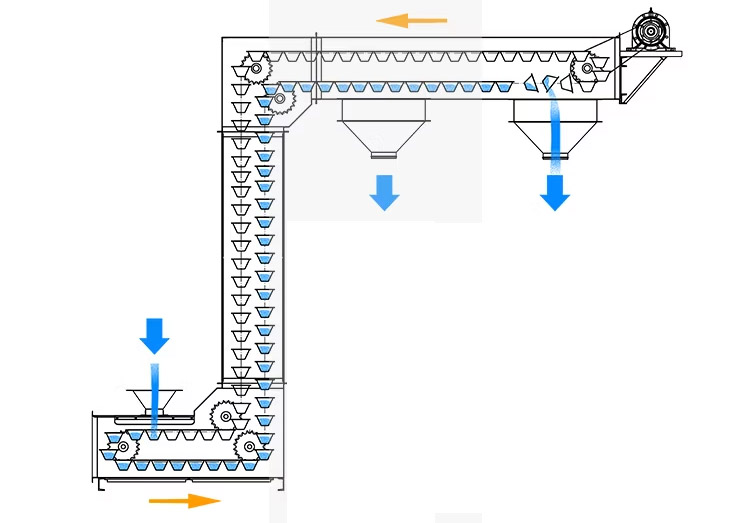
Urea conveying bucket elevator parameters
| bucket volume | 1.8L | 3.6L | 6.5L |
| bucket material | pp | ss304 | ABS |
| body material | mild steel | stainless steel | --- |
| NO.S of discharge port | single | muti-discharge port | --- |
| output | 4-6m3/h | 6.5-8m3/h | 5.5-12m3/h |
| voltage(v) | 220v/240v/as you need | 380v/415v/440v/as you need | as you need |
| speed | adjustable | ||
| conveying capacity | 3-10m3/h | ||
What are the structures of urea conveying bucket elevator?
Bucket elevator is mainly composed of the following parts:
Bucket: used to carry urea, usually made of wear-resistant steel or plastic.
Belt or chain: used to drive the bucket to move.
Drive device: including motor, reducer and transmission device.
Casing: sealed structure to prevent urea from getting wet and dust from spilling.
Feed port and discharge port: used for feeding and unloading urea respectively.
Tensioning device: used to adjust the tightness of the belt or chain.
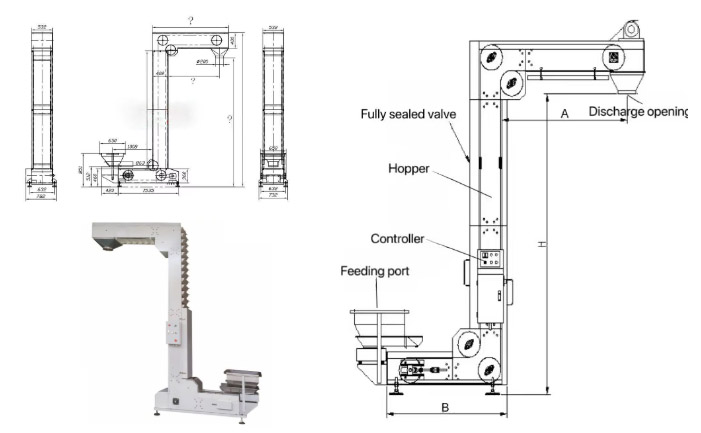
Urea conveying bucket elevator customer case
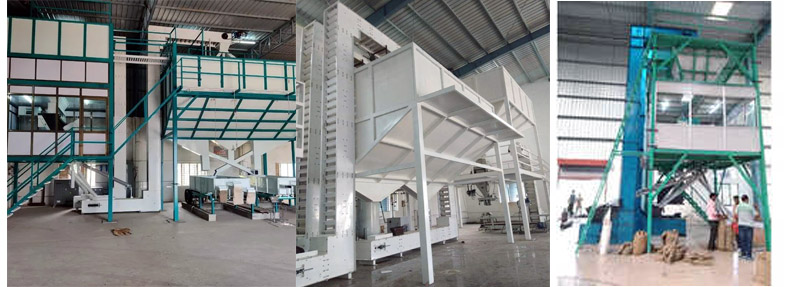
| Case | Large-scale fertilizer production enterprise | Large-scale grain reserve | Medium-sized agricultural production cooperative |
| Customer Background | A large fertilizer production enterprise in Hubei, mainly producing fertilizer products such as urea. The production scale is large, and the material transportation efficiency and stability are extremely high. | A large grain reserve in Pakistan, responsible for the storage of fertilizers such as urea. | The customer is a medium-sized agricultural production cooperative in Yunnan, mainly engaged in grain planting and fertilizer sales. |
| Application scenarios | After urea granulation, the urea granules need to be lifted from the bottom of the granulation tower to the packaging workshop. | When urea is put into and taken out of the warehouse, the urea needs to be lifted from the transport vehicle to the top of the warehouse. | During the fertilizer mixing and packaging process, the urea needs to be lifted to the mixer and packaging machine. |
| Solution | The customer used several high-yield bucket elevators to achieve continuous and stable urea transportation; the elevators use high-strength chains and wear-resistant buckets to adapt to the corrosiveness and abrasiveness of urea particles; and are equipped with a safety monitoring system to ensure the reliability of the elevator operation. | The customer used several bucket elevators with large lifting heights to meet the needs of high-rise material transportation in the warehouse; the elevators use closed casings to reduce the spread of urea dust and protect the environment; they are equipped with a variable frequency speed regulation system to adjust the transportation volume according to actual needs. | The customer used several small bucket elevators with compact structure and flexible installation to adapt to the space limitations of the production workshop; the elevators use stainless steel buckets, which are corrosion-resistant and easy to clean; and are equipped with level sensors to achieve automatic control. |
| Customer Feedback | The bucket elevator runs stably and has high conveying efficiency, which greatly improves the automation level of the production line; it reduces manual handling, reduces labor intensity and production costs. | The bucket elevator runs smoothly and has a large conveying capacity, which improves the efficiency of urea storage and outbound storage; it has good airtightness, reducing material loss and environmental pollution. | The bucket elevator runs stably and reliably, improving the efficiency of fertilizer mixing and packaging; it has a simple structure, is easy to maintain, and reduces the cost of use. |
How to choose a urea conveying bucket elevator?
When choosing a bucket elevator to transport urea, the following factors should be considered:
Material characteristics: urea particle size, humidity and fluidity.
The conveying capacity can reach 50 tons, and the conveying capacity is determined according to production needs.
The lifting height is optional from 5 to 70 meters.
Environmental conditions: temperature does not exceed 400℃, humidity and dust control requirements.
Material selection: There are two types: carbon steel and stainless steel. The hopper and shell materials must be corrosion-resistant and wear-resistant.
